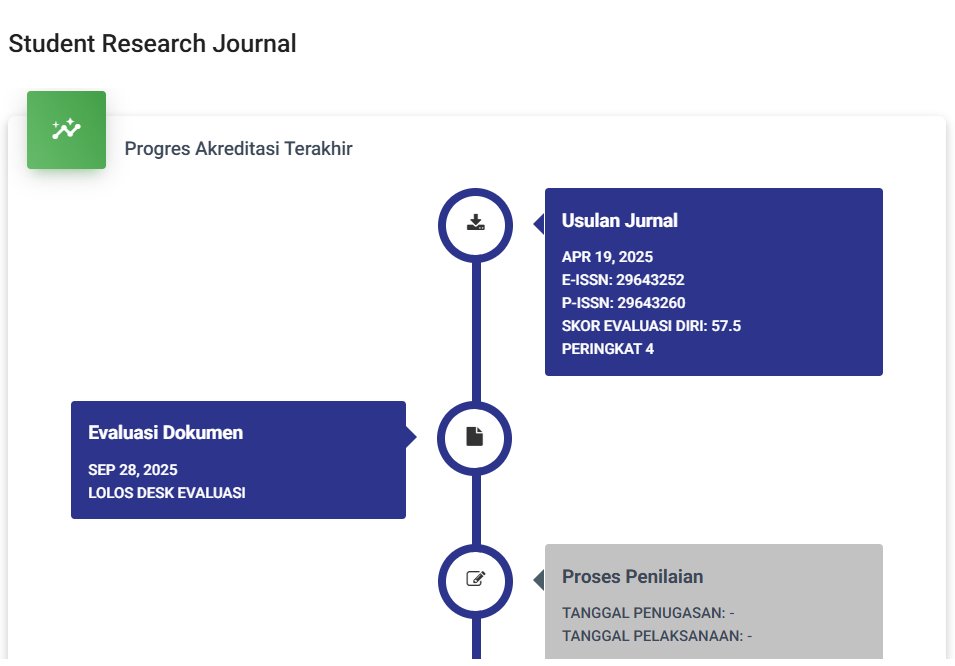Penerapan Model Problem Based Learning PBL Untuk Meningkatkan Hasil Belajar Materi Konsep, Jenis, Dan Fungsi Musik Kreasi Pada Peserta Didik Kelas XII IPA 4 SMAN 8 Denpasar
DOI:
https://doi.org/10.55606/srjyappi.v2i1.1042Keywords:
Problem Based Learning, Learning OutcomesAbstract
This Classroom Action Research aims to improve the learning of the material "Understanding the Concepts, Types, and Functions of Creative Music" through the application of the Problem Based Learning (PBL) model. The research was conducted in two cycles in class XII Science 4 SMA N 8 Denpasar. Data collection methods involve observation, tests, and analysis of learners' learning outcomes. At the beginning of the study, observations showed that students faced difficulties in understanding the concepts, types, and functions of music creations. Therefore, this classroom action research is designed to integrate PBL as a primary learning approach. Each cycle consists of planning, execution, observation, and reflection. The results showed that the application of PBL significantly increased students' understanding of creative music material. In addition, interaction between students has also increased, illustrating the existence of collaboration in solving problems related to the concept of creative music. Post-test results show consistent improvement from cycle to cycle. This research can be concluded that, the PBL model is effective in increasing students' understanding of the concepts, types, and functions of music creation. The implications of this research can be used as a reference for the development of more innovative and problem-solving oriented learning strategies in the context of creative music art materials.
References
Ansari, G. (2022). Pembelajaran Teknik Dasar Penjarian Bermain Keyboard Dalam Nada Dasar C Mayor Dengan Lagu Model “Tokecang” Menggunakan Metode Imitasi Dan Drill Bagi Siswa/I Minat Keyboard Di SMPK Adisucipto Kupang. (Tugas akhir sarjana strata 1, UNWIRA Kupang).
Azwar, S. (2016). Metode Penelitian. Yogyakarta: Pustaka Pelajar.
Edmund, Prier. (2001). Kamus Musik. Yogyakarta: Pusat Musik Liturgi.
Fauzi, Harry. (2017). Buku Teks Pendamping Seni Budaya. Bandung: Yrama Widya.
Ilhaq, W. (2016). Penerapan Model PBL Dalam Meningkatkan Aktivitas Dan Hasil Belajar Pada Materi Pasar Sasaran Siswa Kelas X Pemasaran 2 SMK N 9 Semarang. (Penelitian Tindakan Kelas, Universitas Negeri Semarang).
Pizaludin dan Ermalinda. (2012). Penelitian Tindakan Kelas. Bandung: Alfabeta.
Sani, AR. dan Sudiran. (2016). Penelitian Tindakan Kelas. Tangerang: Tsmart Printing.
Sugiyono. (2019). Metode Penelitian Kuantitatif, Kualitatif, dan R&D. Bandung: Alfabeta.
Sukohardi, A. (2019). Teori Musik Umum. Yogyakarta: Pusat Musik Liturgi.
Sumaryanto, F. Totok dan Hartono. (2003). Metodologi Penelitian I (Kualitatif dan Tindakan Kelas). Untuk Kalangan Sendiri.
Tirta, A. (2023). Penerapan Metode Tutor Sebaya Untuk Meningkatkan Hasil Belajar Berkreasi Gerak Tari Sederhana Pada Peserta Didik Kelas X Kecantikan W1 SMK N 3 Denpasar. (Penelitian Tindakan Kelas/PTK, Universitas PGRI Mahadewa Indonesia).
Downloads
Published
How to Cite
Issue
Section
License
Copyright (c) 2024 Gusti Ayu Made Puspawati, Gaudensia Ansari, Mirah Rahmawati

This work is licensed under a Creative Commons Attribution-ShareAlike 4.0 International License.








